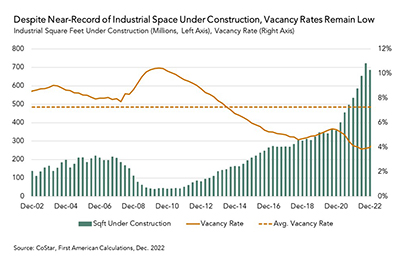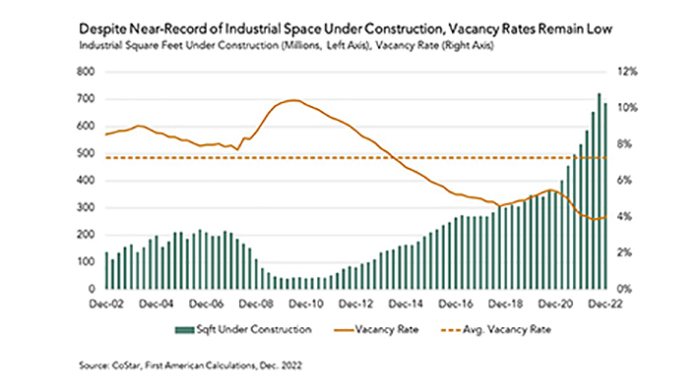
First American: Positive Industrial Real Estate Outlook Despite Dip

Industrial space remains in demand across the country despite recent headlines about tabled expansion plans from eCommerce companies and retail store closures, reported First American, Santa Ana, Calif.
“Supply and demand dynamics in industrial real estate support a moderating, but still strong outlook for the sector,” said Xander Snyder, Senior Commercial Real Estate Economist with First American. “While supply and demand trends will vary meaningfully by market, industrial assets remain in-demand to both lease and own.”
Snyder noted industrial real estate remains among the most in-favor commercial asset classes among investors today, driven by strong leasing demand. Construction has surged, with a near-record 650 million square feet of industrial space currently under construction nationally. But industrial vacancy rates remain far below the 7.3 percent 20-year average. Fourth-quarter net absorption was the fourth highest quarter on record.

“The still-strong net absorption rate indicates that there is sufficient leasing demand to absorb enough of the upcoming industrial space currently under construction without significant declines to rent or property prices,” Snyder said.
New industrial construction is underway across the country, but nearly 40 percent of the space underway is concentrated in Texas and the Southwest, First American reported. Dallas alone accounts for 13 percent of total construction underway nationwide.
“Transaction volume for industrial properties remains high compared with historic levels, but has dipped from the record set in the fourth quarter of 2021,” Snyder said, “As transaction volumes fell from peak levels through 2022, price growth decelerated but remained positive and above historical norms.”
Snyder said supply and demand dynamics in industrial real estate support a moderating but healthy outlook for the sector. “While supply and demand trends will vary meaningfully by market, industrial assets remain in-demand to both lease and own,” he said.
